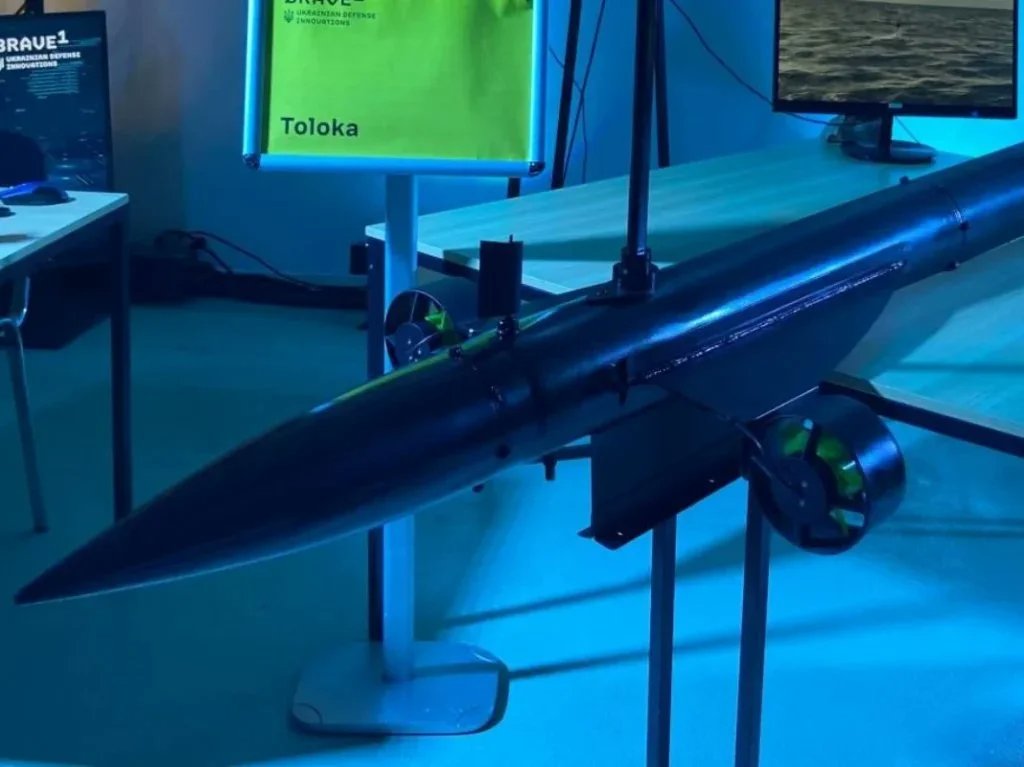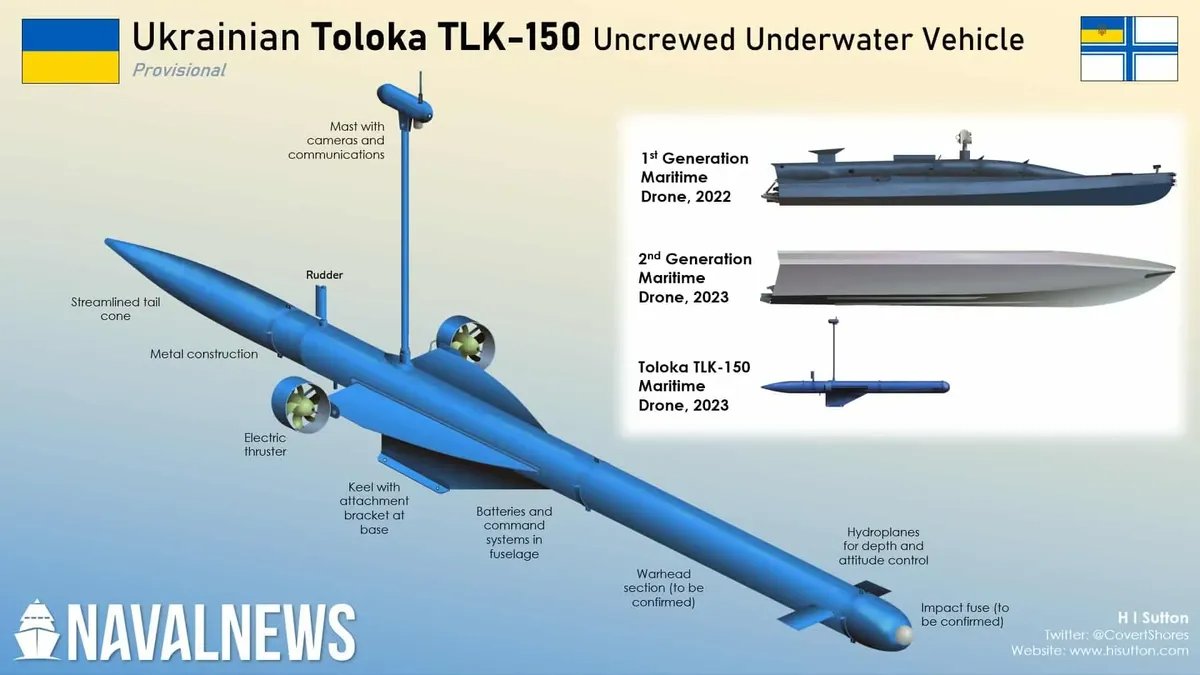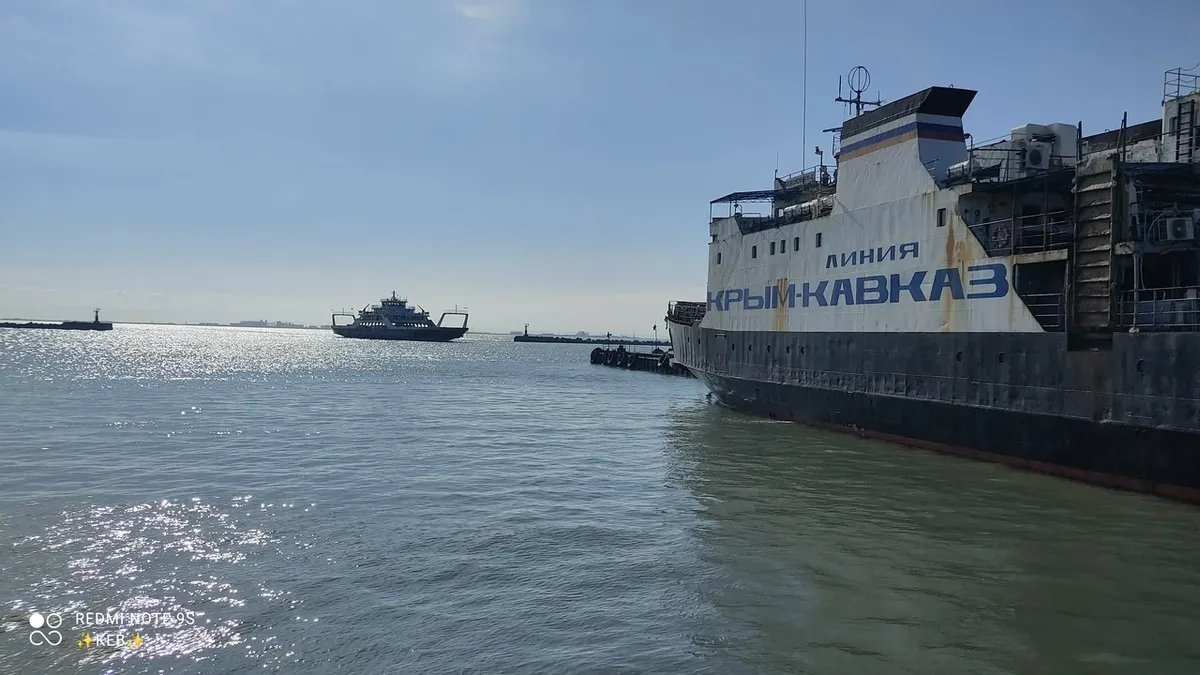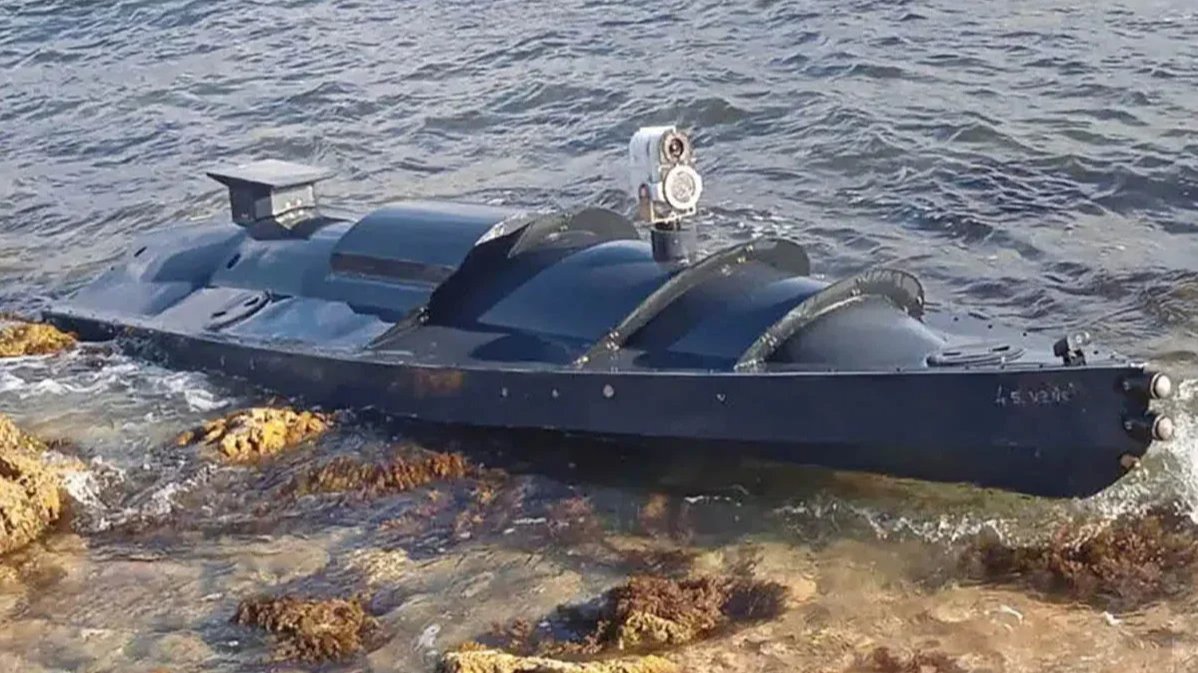Last week, two Russian vessels, the Olenegorsky Gornyak landing ship and the Sig tanker, were attacked by Ukraine’s above-water remotely piloted vehicles. The attack inflicted significant damage to both ships and caused them to become dead in the water. Another above-water drone hit the Crimean Bridge in the early hours of 17 July. Novaya-Europe has looked into whether this new weapon is capable of shifting the power balance in this war and leading to Kyiv’s victory in the Black Sea.
A new weapon
Most of Ukraine’s attacks that involve above-water drones result in success, Oleksandr Musiyenko, the head of the Centre for Military Legal Studies, has told Novaya-Europe. Dozens of Russian ships are “locked in their bays, afraid to set sail” as the Russian fleet remains vulnerable to this new type of weapon, despite all the security measures, he adds.
The attack on the Crimean Bridge has shown that “not just ships, but also fixed facilities” are guardless before the unmanned vehicles, Musiyenko says.
He believes that the above-water drones can go as fast as 80 km/h and remain almost unnoticed. They are also capable of carrying hundreds of kg of explosives in their warhead.
As yet, two types of sea drones are being designed in Ukraine: above-water and underwater ones, Ukrainian military expert Roman Svitan has told Novaya-Europe. There are already around ten different above-water models, he says. The two recent attacks on the Russian ships involved “devices that were designed by a joint effort of the State Security Service and the Ukrainian Navy”. Those are unmanned boats, radio- or satellite-controlled, that can move at the speed of 80 km/h. The drone has protection from being shut down by electronic warfare support and has a reach of up to 800 km.
OSINT analyst H-I Sutton refers to the maritime drones as uncrewed surface vehicles (USVs), calling them “small, purposeful, and expendable”. “As ingenious and neatly engineered as they are, they are the sort of thing which can be built in garages if necessary. Ukrainian sources put the unit price at $250,000,” Sutton reveals.
H-I Sutton provides the following specifications for the Ukrainian drones:
- Length: 5.5 metres
- Full weight: up to 1,000 kg
- Range: up to 430 NM (800 km)
- Autonomy: up to 60 hours
- Combat load: up to 200 kg
- Max speed: 43 knots (80 km/h)
- Navigation methods: automatic GNSS, inertial, visual

TLK Toloka. Photo: Twitter
Ukraine has also designed a series of underwater drones which Roman Svitan refers to as navigable torpedoes called TLK Toloka. Its biggest prototypes can carry up to 500 kg of explosives and attack both regular ships and submarines.
The Naval News projects provides a description for the uncrewed underwater vehicles, or UUVs:
“The TLK-150 is quite a small drone, being only 2.5 metres long. Unusually it has twin thrusters mounted on small wing-like stabilisers and a large keel. Combined with a separate rudder and forward mounted dive planes this should provide excellent agility.”
Underwater unmanned vehicles are a “very promising” weapon, but they are rather difficult to develop, David Sharp, an Israeli military expert, reveals. “It is very hard to control these devices as water makes communications very difficult. We don’t know how close Ukraine is to actually creating that sort of a weapon,” Sharp says.

Underwater unmanned vehicles. Photo: Naval News
Control over the sea
Oleksandr Musiyenko says Ukraine attacks Russia’s ships with drones so as to damage the engine rooms, props, and other vital parts of the vessels. The expert believes that Kyiv currently dictates the terms of naval warfare to Russia.
It is unknown how many water drones Ukraine has at the moment. Roman Svitan is certain that after mass production of various Ukrainian drones is ensured, the country will be able to completely control naval traffic both in the Black Sea and in the Sea of Azov by moving its guided devices back and forth through the Kerch Strait.
Both Russian Navy and civilian Russian ships may be under attack as the latter may be considered legitimate targets during the time of war. Svitan also makes a point that the attacked Sig tanker is on the sanctions list for delivering fuel to Russia’s military in Syria.
On Ukraine’s list of priority targets, the port of Novorossiysk ranks on par with the Sevastopol homeport of Russia’s Navy. But soon the threat will expand to other Russian ports, such as Anapa, Sochi, and Taman.
Ukraine’s Defence Ministry has informed international seafaring boards that the Black Sea is a combat zone, which makes it unsafe for maritime traffic, Svitan says. From now on, captains of ships make decisions whether to enter certain havens, bearing the responsibility for the lives of their crews and their cargo.
Ferry passage
Roman Svitan assumes that the water drones may cut the connection between Crimea and Russia with another attack on the Crimean Bridge or the ferry line. The ferry is also a legitimate target for the drones, Svitan says, as it is used to “deliver military cargo to Crimea”.
“Crimea will be cut off in the north by the Ukrainian military that will break off its land connection with Russia, and by water and air drones, as well as missiles, in the east,” Svitan believes.

The view of the ferry passage to Crimea from a freight train station. Photo: Yandex Maps
Had there been no grain deal, Ukraine’s drones could have been “hunting down Russia’s ships” for over a year already, Svitan says, adding that in that case, “there would have been no Russian vessels in the Black Sea and the Sea of Azov at all”.
“The entire [Russian] Black Sea Fleet would be where the Moskva cruiser is,” Svitan surmises.
Support independent journalism
Remarkable success
However, there have also been cases of drone failure. David Sharp notes that “at least one drone” was washed ashore in Crimea. It was shown on TV and likely “created by local manufacturers by modding a civilian boat,” Sharp says.
The drone in question is not a state-of-the art advanced weapon, he believes. At the same time, both the attack on the Crimean Bridge and on the Olenegorsky Gornyak, a landing ship docked in the port of Novorossiysk, should be considered “a remarkable success”.
David Sharp says several cases of drones closing in on Russian ships were reported as well. However, there is no verified indication that those ships were eventually damaged.
The Israeli expert reveals that the above-water drones aren’t exactly a new type of weapon. Remotely-controlled Iranian drones were used, for instance, by Yemeni Houthis against warships of the Arab coalition in the Red Sea.
“I don’t see any significant challenge that would prevent Ukraine from launching mass production of water drones or buying those,” David Sharp continues.
Russia’s Armed Forces are already forced to spend a good deal of money to resist the attacks of such devices by altering its order of military bases usage and duty instructions on board the ships, Sharp says. It appears as if the Russian military “is doing all it can to keep the [Crimean] bridge out of danger”.
No way to lock Russian ships in ports
The efficiency of sea drones drops significantly while there is “bad weather or waves at sea,” David Sharp believes. Additionally, “issues might arise” with the reach of the drones as expanding its fuel tank would lead to the shrinking of the warhead, and the drone needs a lot of explosives to successfully attack a warship. Moreover, some very precise intel is required to find an enemy’s ship offshore.
“I don’t think any number of unmanned boats may actually lock all Russia’s ships in ports. However, it is obvious that they would be in greater danger than before,” Sharp notes. “This situation has made Russians extremely nervous.”
David Sharp is not certain as to how the activities of Ukraine’s UUVs will affect the marine transport insurance market in the Black Sea. Perhaps some ship owners might find it dangerous to head their vessel to a port that was recently attacked by a drone.
Sharp’s sources say that Sevastopol, the homeport of the Russian Black Sea Fleet, has its haven sealed with artificial obstacles, and, most likely, nets. Obviously, this also creates problems for the defending side as well.
In addition to that, far reach tactics should be used to resist the water drones, including airborne, seaborne and coastal patrol, quick identification of targets, and fast exchange of information with the ships and the higher command. If all those tactics fail, the ships’ crews will be forced to defend their vessel with firearms and light artillery. However, the recent attack on the Russian landing ship shows that this last line of defence can be extremely unreliable.
Join us in rebuilding Novaya Gazeta Europe
The Russian government has banned independent media. We were forced to leave our country in order to keep doing our job, telling our readers about what is going on Russia, Ukraine and Europe.
We will continue fighting against warfare and dictatorship. We believe that freedom of speech is the most efficient antidote against tyranny. Support us financially to help us fight for peace and freedom.
By clicking the Support button, you agree to the processing of your personal data.
To cancel a regular donation, please write to [email protected]

